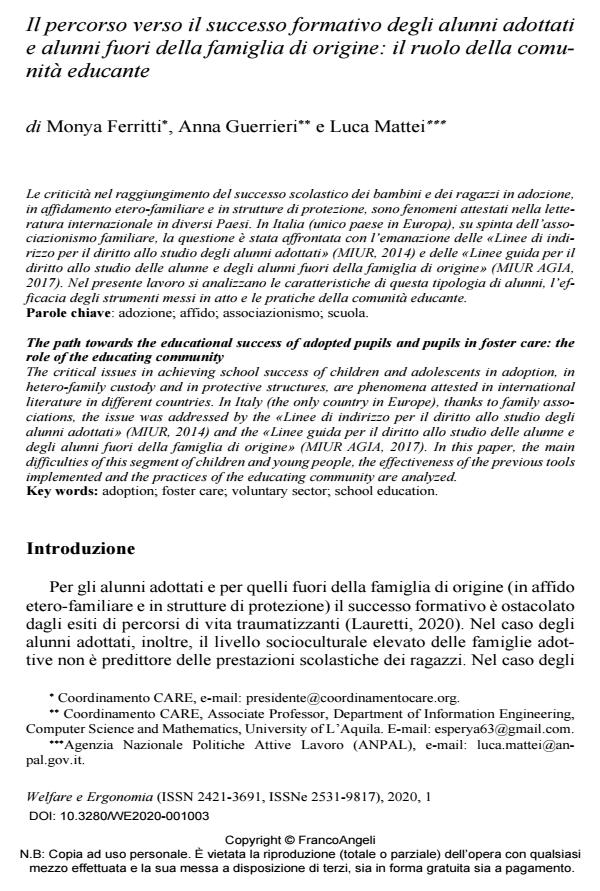Il percorso verso il successo formativo degli alunni adottati e alunni fuori della famiglia di origine: il ruolo della comunità educante
Titolo Rivista WELFARE E ERGONOMIA
Autori/Curatori Monya Ferritti, Anna Guerrieri, Luca Mattei
Anno di pubblicazione 2020 Fascicolo 2020/1
Lingua Italiano Numero pagine 12 P. 17-28 Dimensione file 332 KB
DOI 10.3280/WE2020-001003
Il DOI è il codice a barre della proprietà intellettuale: per saperne di più
clicca qui
Qui sotto puoi vedere in anteprima la prima pagina di questo articolo.
Se questo articolo ti interessa, lo puoi acquistare (e scaricare in formato pdf) seguendo le facili indicazioni per acquistare il download credit. Acquista Download Credits per scaricare questo Articolo in formato PDF

FrancoAngeli è membro della Publishers International Linking Association, Inc (PILA)associazione indipendente e non profit per facilitare (attraverso i servizi tecnologici implementati da CrossRef.org) l’accesso degli studiosi ai contenuti digitali nelle pubblicazioni professionali e scientifiche
Le criticità nel raggiungimento del successo scolastico dei bambini e dei ragazzi in adozione, in affidamento etero-familiare e in strutture di protezione, sono fenomeni attestati nella letteratura internazionale in diversi Paesi. In Italia (unico paese in Europa), su spinta dell’associazionismo familiare, la questione è stata affrontata con l’emanazione delle «Linee di indirizzo per il diritto allo studio degli alunni adottati» (MIUR, 2014) e delle «Linee guida per il diritto allo studio delle alunne e degli alunni fuori della famiglia di origine» (MIUR AGIA, 2017). Nel presente lavoro si analizzano le caratteristiche di questa tipologia di alunni, l’efficacia degli strumenti messi in atto e le pratiche della comunità educante.
Parole chiave:Adozione; affido; associazionismo; scuola.
- Un argine contro la povertà educativa: le linee di indirizzo per il diritto allo studio degli alunni adottati Monya Ferritti, Anna Grimaldi, Anna Guerrieri, in SICUREZZA E SCIENZE SOCIALI 2/2022 pp.92
DOI: 10.3280/SISS2022-002007
Monya Ferritti, Anna Guerrieri, Luca Mattei, Il percorso verso il successo formativo degli alunni adottati e alunni fuori della famiglia di origine: il ruolo della comunità educante in "WELFARE E ERGONOMIA" 1/2020, pp 17-28, DOI: 10.3280/WE2020-001003